
Radiometrics
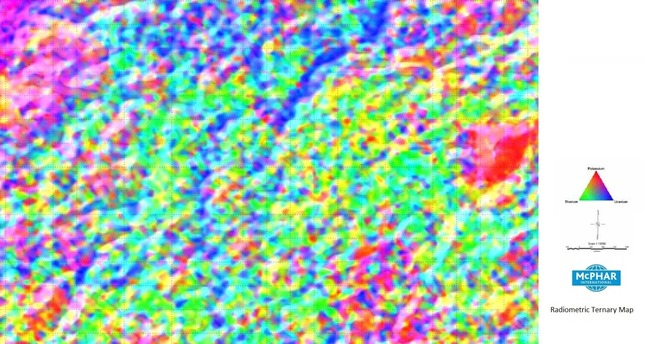
Radiometrics, or Gammaray Spectrometry, although used in oil & gas exploration, is more widely used in Mining exploration. Installed on either fixed-wing aircraft or helicopters, and combined with other sensors, such as EM, GRAVEX and magnetics, a radiometric system is a very cost effective geological and geophysical mapping tool.
For oil & gas exploration, a radiometric system may be used to detect subtle characteristic radiation patterns as indicators of subsurface hydrocarbon accumulations over petroliferous terrain.
Potassium (K), uranium (U), and thorium (Th) are the three most abundant radioactive elements, occurring in various proportions in all rocks and soils. Their different chemical properties provide useful indicators of normal and anomalous chemical or mechanical (transport) processes. For geologic mapping and exploration purposes, the radiometric survey technique is usually considered and interpreted in geochemical terms.
FEATURES & BENEFITS:
- An excellent tool for either oil & gas or mining exploration
- Fixed-wing airplane or helicopter mounted systems
- Can be used alone or with other sensors, such as GRAVEX, SEEPFINDER, Gammaray Spectrometer or Electromagnetics
- Radiometric surveys measure variations in the natural radioactivity of an area
- Modern spectrometers allow the detection of radioactivity at very low levels that were not previously detectable
BASIC CONCEPTS OF GAMMARAY SPECTROMETRY
- Not-that-remote-sensing, gamma-ray spectrometry is typically flown at 80 m to 120 m above the terrain
- A surface mapping technique, not penetrative, so we must understand the surface
- Uses geophysical instrumentation, but is a geochemical application
- Potassium (K) is the major element, Uranium (U) is a mobile trace element and Thorium (Th) is a relatively immobile trace element
- No fixed field of view – hot point sources may lie outside nominal view
- Gamma ray flux decreases exponentially from source
- Single measurement, big area, = average of rock, overburden, water, vegetation, etc.
- Bedrock K, U, Th concentrations usually > AGRS K, eU, eTh values; overburden less so
- Airborne ratios tend to closely approximate those at ground level
- Ratios are sensitive to elemental variations, enhance subtle relative variations
- But, use ratios cautiously, check reliability, numerator/denominator
- A multi-sensor gammaray spectrometer package is a powerful addition to Magnetics/EM
SOME MORE BASIC CONCEPTS
The usefulness of gammaray spectrometry to geological mapping and mineral exploration depends on the extent to which:
- The radioactive element distributions relate to bedrock differences (normal lithologic signatures)
- Normal lithologic signatures are recognizably modified by mineralizing processes (alteration signatures)
- Bedrock signatures are incorporated into surficial materials (bedrock, unsorted tills, clay, sand, gravel, affected by soil and vegetation types, soil moisture, surface water)
- Surficial materials can be spatially related to bedrock sources
McPHAR’s radiometric systems all feature Pico Envirotec’s NEW 1024-channels AGRS Advanced Airborne Gammaray Spectrometer and sensors. AGRS is a highly advanced system ideally suited for minerals or environmental applications as the maximum throughput of AGRS can be as high as 250,000 counts per second (cps) per detector.
AGRS features automatic HV calibration and linearization based on natural radioactive elements, therefore radioactive sources are NOT required for calibration. As well, AGRS features automatic peak detection and real-time calibration. The full spectrum is recorded at a sample rate of once per second (1024 channels) which permits NASVD processing (using PRAGA-3 software). Typically the data are processed to produce the standard IAEA channels, Total Count, Potassium, Uranium and Thorium. Potassium, equivalent Uranium (eU) and Thorium concentrations are derived, as well, various ratios of these concentrations are computed, which greatly aid in the interpretation of the survey results.
Depending on the application and the airborne platform to be used, the sensor volumes in our AGRS systems range from 16.8 litres of Na(TI) detector to 50.4 litres of detector “downward-looking” with an appropriate volume of sensor “upward-looking”. A typical helicopter-borne system would have a volume of 16.8 litres “upward-looking” and 4.2 litres “downward-looking”, whereas a typical fixed-wing system would have a volume of 33.6 litres “upward-looking” and 8.4 litres “downward-looking”.
FIXED-WING RADIOMETRICS
Our fixed-wing systems have sensor volumes of 33.6 litres or 50.4 litres of Na(TI) detector “upward-looking” and 8.4 litres “downward-looking”. The choice of which sensor volume will depend largely on the survey's application, the terrain where the survey will be flown, the aircraft type and not least, the Client's budget.
HELICOPTER-BORNE RADIOMETRICS
A typical helicopter-borne system would have a volume of 16.8 litres “upward-looking” and 4.2 litres “downward-looking”, however, certain survey projects may require larger AGRS sensor volumes of 33.6 litres “upward-looking” and 8.4 litres “downward-looking”.
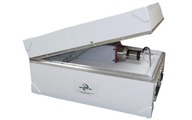 |
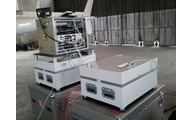 |
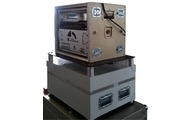 |
AGRS-1024/256 Gammaray Sensor
|
AGRS Advanced Airborne Gammaray Spectrometer system with 33.6 litres of detector “downward-looking” and 8.4 litres “upward-looking” before installation in aircraft. |
AGRS Advanced Airborne Gammaray Spectrometer system with 16.8 litres of detector “downward-looking” and 4.2 litres “upward-looking” before installation in a helicopter. Note the IMPAC data acquisition system and PDS-3 power distribution system in the rack mounted on top of the sensor. |
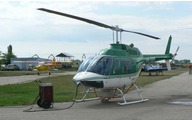 |
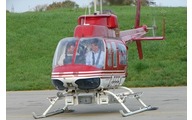 |
|
AGRS Advanced Airborne Gammaray Spectrometer system with 16.8 litres of detector “downward-looking” and 4.2 litres “upward-looking” installed under the fuselage of a Bell 206B3 Jet Ranger helicopter. |
AGRS Advanced Airborne Gammaray Spectrometer system with 16.8 litres of detector “downward-looking” installed in custom-made housings mounted on the skids of a Bell 206L3 Long Ranger helicopter. |